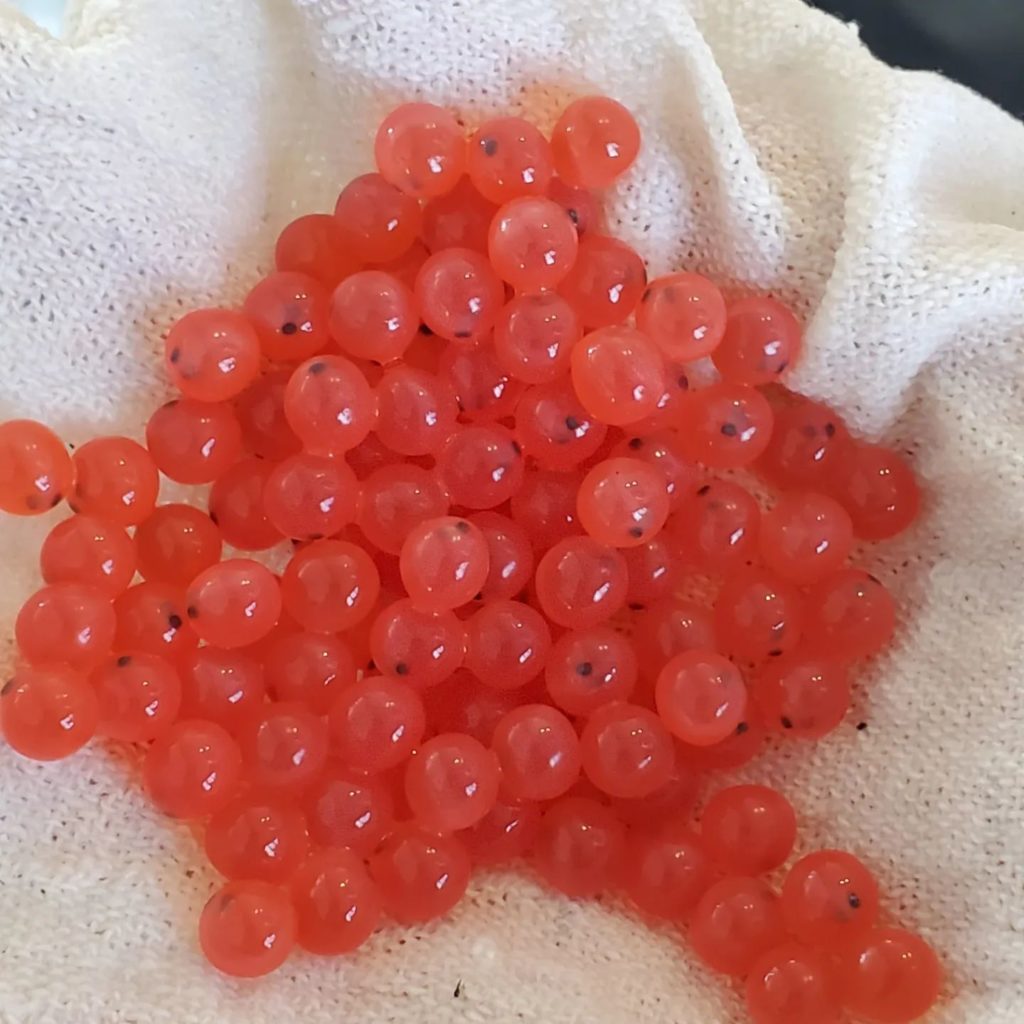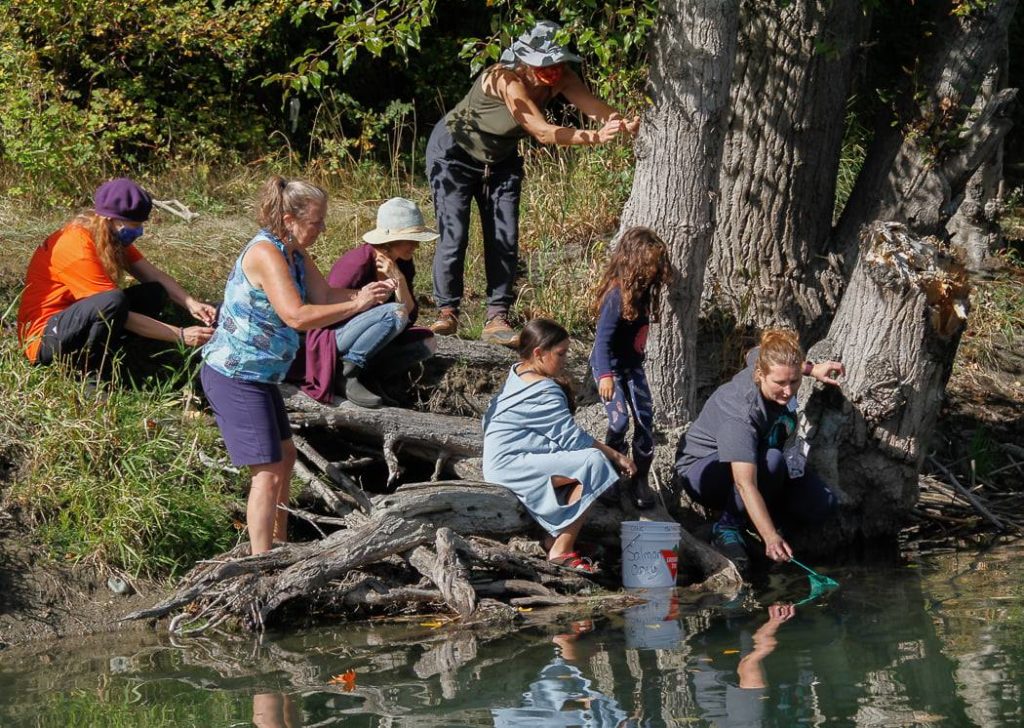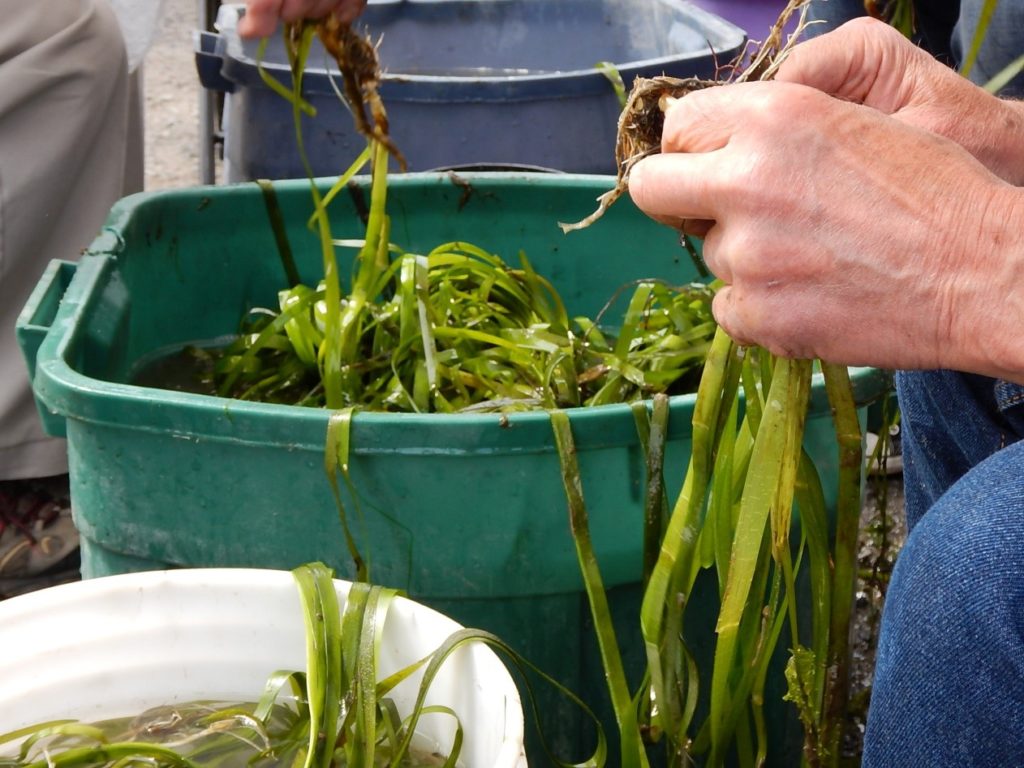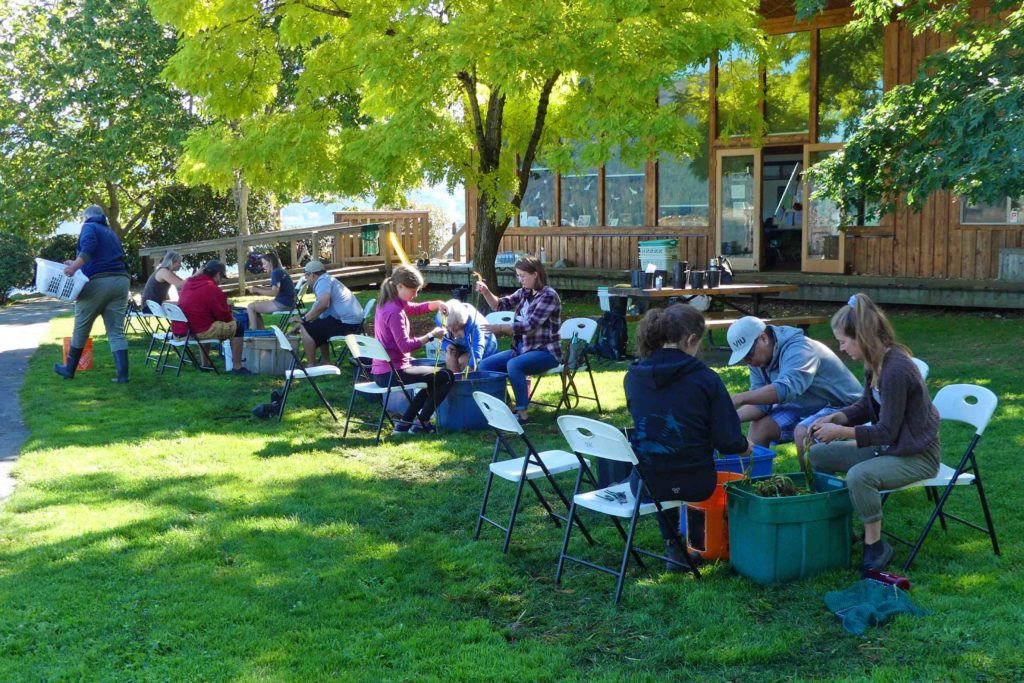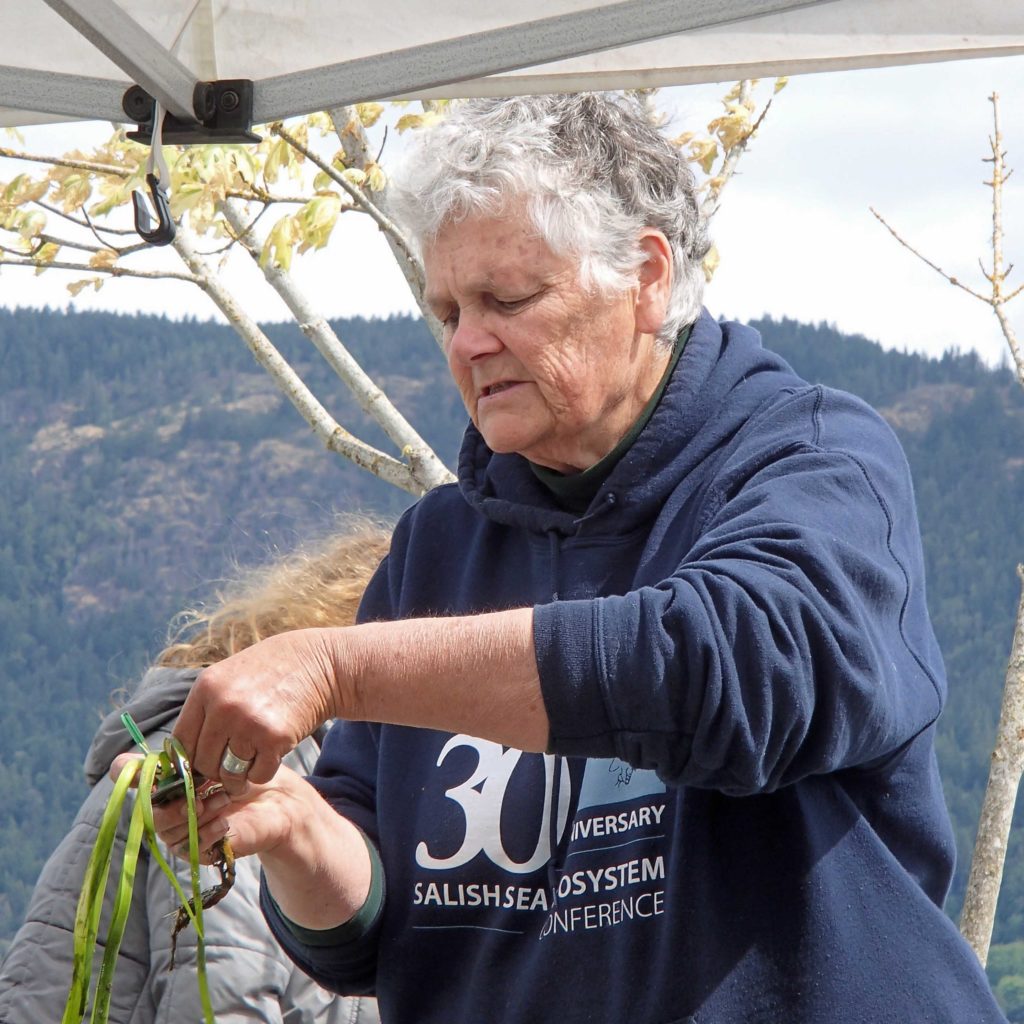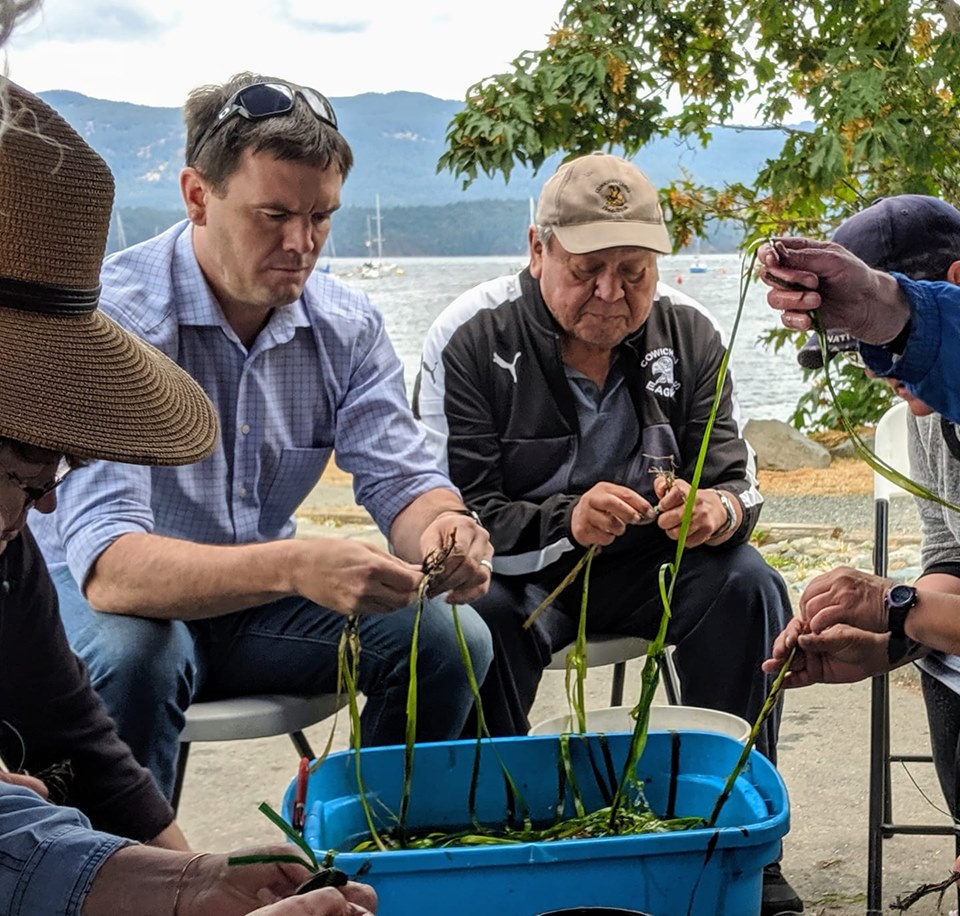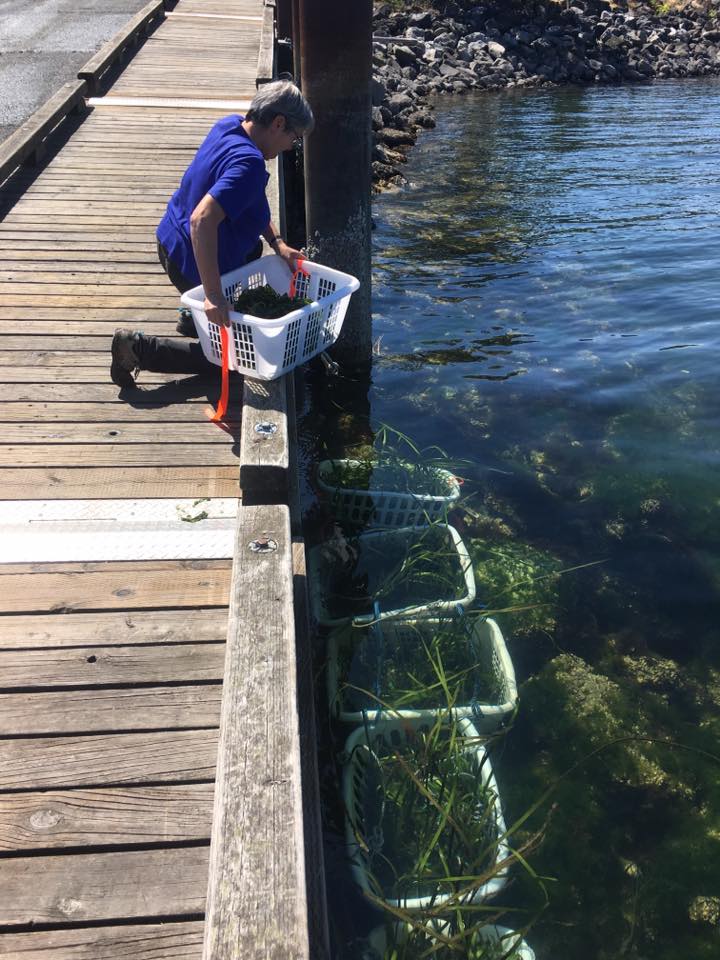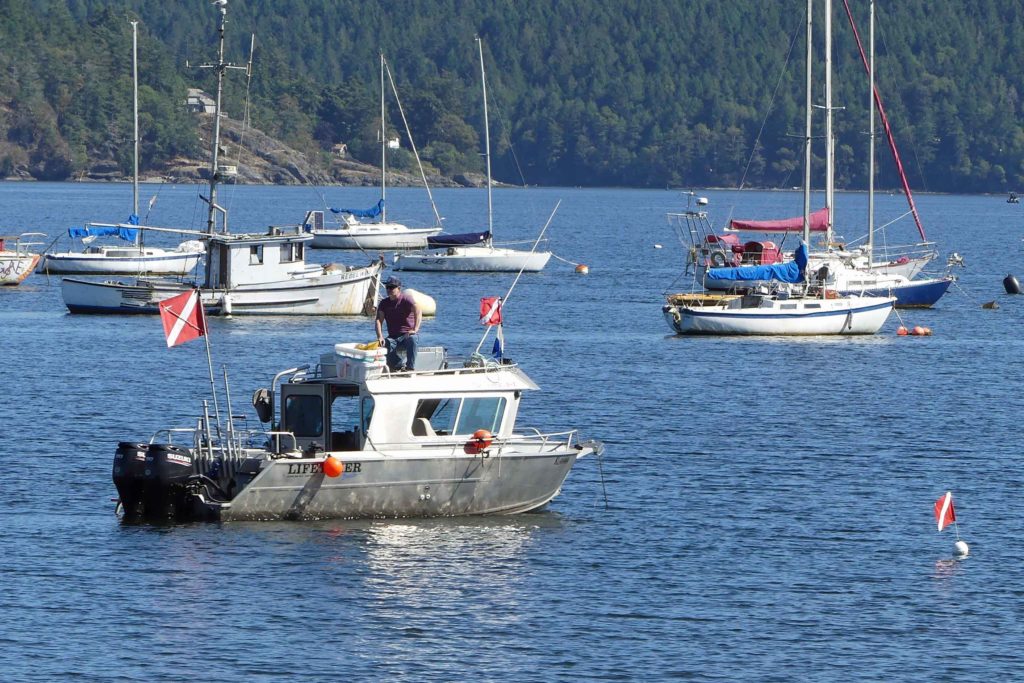Introduction
Coho, Chum, Pink, Chinook and Steelhead Salmon all return to the Cowichan and Koksilah Rivers to complete their life cycle. Watching the salmon travel upstream, battling the mighty forces of rushing river water, finding a place to lay their eggs, spread milt and then die is a powerful sight to see. You are witnessing the beginning of one life cycle and the end of another cycle. Between the beginning and end is where things get really interesting for the salmon. They hatch, spend some time in their home stream, then make their way down to an estuary before they head out to sea. Eelgrass beds in the estuary are a critical source of food and shelter for young salmon while they are transitioning to saltwater. The life cycle of salmon is an incredible journey, and it’s one that we should all pay more attention to protecting and supporting as our climate changes.
Read
Learn about the Stream to Sea Program that the Nature Centre participates in every year. Salmon Eggs
Read about the Nature Centre’s project to conserve and protect the Cowichan and Koksilah watersheds. Watershed Restoration
Look
Watch
Caption: Join Hayley and Eddy the Eelgrass from the Nature Centre on an imaginary tour through the watersheds of the Cowichan Valley! Water flows from the top of the mountains to lakes, rivers and eventually to the estuary, where the land meets the ocean. Eelgrass meadows in the Cowichan estuary provide an important habitat for juvenile salmon to grow and transition into a saltwater environment.
Video Credit: Cowichan Valley Regional District
Caption: Learn about the return of the Chum salmon in the estuary due to local conservation efforts. Many other types of salmon can be found in Cowichan Bay including Coho, Chinook Coho and Chum Salmon, as well as Steelhead Trout (a Salmon species) and Cutthroat Trout. Thank you to the Pacific Salmon Foundation for providing support to the Nature Centre over the past 10 years, including for riparian restoration work with youth!
Video Credit: Pacific Salmon Foundation
Caption: Cowichan Bay is known for its marina, including fishing, kayaking and cruising on the water. However, anchoring and mooring in the estuary can damage eelgrass habitats, as anchor chains drag on the sea floor. Watch how you can take action by using seafloor friendly mooring systems.
Video Credit: SeaChange Marine Conservation Society
Resources
- Find our about the Cowichan Watershed Board‘s work on monitoring and supporting the sustainability our salmon in the Cowichan and Koksilah Watersheds.
- Find quick facts, posters and colouring sheets on different type of Pacific salmon at Pacific Wild.
- Read Pacific Salmon Foundation’s storybook on climate action for salmon.
- Watch Kintama’s animation of Chinook and Coho salmon migration.
- Explore Pacific Salmon Explorer’s research data on pacific salmon.
- Listen to salmon sounds from the Fish Sounds database, a research collaboration with the University of Victoria, University of Florida, among others.
- Teach about salmon in the food web using resources from Science World.
- Teach about salmon anatomy and dissection using resources from Pacific Salmon Foundation.
- Explore resources for educators from Fisheries and Oceans Canada, including information about raising salmon in your classroom!
- Teach about the interconnectedness between salmon and First Nations People using ideas from First Nations Education Steering Committee.
- Find salmon life cycle lessons from Sierra Club BC.
- Look at SeaChange’s maps on eelgrass restoration.
- Try Nature Centre’s word search on eelgrass.


